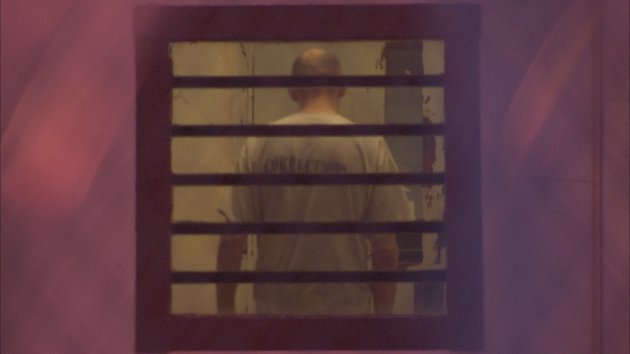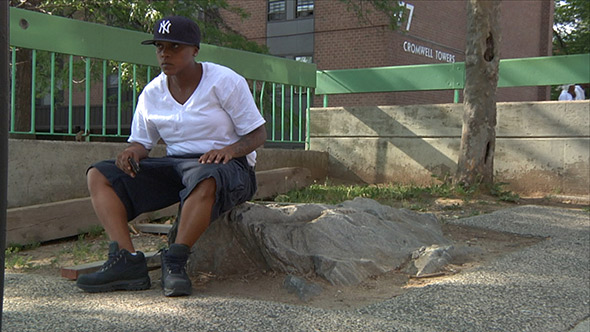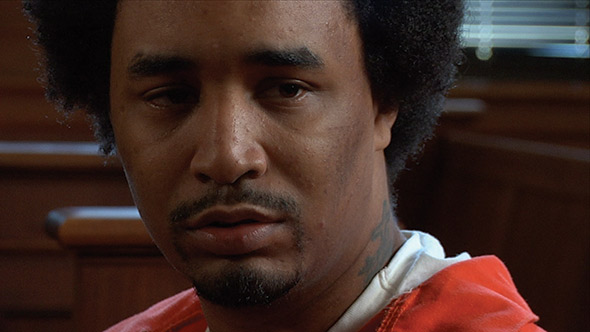Crafting a Spare Soundtrack That Matches the Director's Work in the Avid
Just released in theaters, The House I Live In is Eugene Jarecki’s provocative new documentary on America’s war on drugs. A winner of the Grand Jury Prize at this year’s Sundance Film Festival, the film mixes interviews with law enforcement personnel, judges, dealers, prisoners and their families, with material from the front lines of a conflict that has cost U.S. taxpayers more than $1 trillion. As with his previous documentaries, which include Freakonomics, The Trials of Henry Kissinger, Reagan, and Why We Fight, Jarecki presents audiences with an avalanche of facts and ideas, provoking a reexamination of an effort that has stretched over decades and profoundly affected countless thousands of lives.
Sound plays a crucial role in Jarecki’s attempt to draw audiences into his story and capture the essence of the street corners, correctional institutions and courtrooms where the everyday business of the war on drugs is carried out. The final mix was completed at PostWorks in New York by re-recording mixer Christopher Koch, in his third collaboration with Jarecki.
Koch notes that Jarecki favors a spare soundtrack that is raw and unadulterated. “One of the hallmarks of Eugene’s filmmaking is that he strives to be comprehensive yet concise in delivering information to the viewer,” Koch explains. “He told me many times during the course of the mix that he was aiming for the feeling of an elementary school film strip—a very straightforward presentation of information.”
Jarecki had been working on the film for more than four years and had been engaged intensively with picture editor Paul Frost and dialogue editor Ron Bochar prior to the mix. Koch notes that extreme care was taken to ensure that all of the work the director had invested in the edit and temp mix was carried over to the final mix. The Avid OMF tracks were arranged so that all of the dialogue appeared on the first eight channels only. Koch was thus able to import his own OMF of the film and, when it was time to incorporate Bochar’s, simply swap out his eight dialogue tracks for Bochar’s.
“Ron made sure not to disturb Eugene's mix relationships during his edit, so that when I imported the dialog edit, Eugene's balance of the boom-to-lav microphones and music-to-dialogue remained as he had them in the Avid,” Koch recalls. “We heard the same balance in the mix room that Eugene had been hearing when he was editing. That gave us a starting point for the mix that was familiar to him. Eugene knows his edit inside and out, so it was important for me as a mixer to allow the work that had been done in the Avid to be retained as the starting point for the mix.”
Jarecki and Koch paid similarly detailed attention to the music. The original OMF contained source music cues and rough mixes of composer Robert Miller’s score. Each day of the three-week mix, Koch received final stereo mixes and stems from Miller as he completed or revised cues. “In the absence of a dedicated music editor, we ended up re-mixing and re-imagining cues in the mix session,” Koch recalls. “In some instances, we combined stems from two different cues to create a new cue—sometimes even in a different key or time signature.”
They also made careful use of the surrounds. “We used the stems to separate certain elements,” Koch explains. “For example, we might put the strings or the winds in the surrounds in order to pull the listener into the story a bit more. It turned out to be a great device to help direct the viewer and maintain focus through scenes packed with loads of information.”
Early on, Jarecki and Koch decided to keep vérité elements in the left and right channels, excluding the center. That, says Koch, added cohesiveness to the mix. “It helped glue the piece together,” he observes, “as opposed to the exposure that can result from having those and other sound design elements discrete in the center channel. It also kept the sonic image of the film as close as possible to what Eugene had been working with in the Avid. He was never shocked by image-shifting from center to left or right. In a similar way, that consistency keeps viewers engaged in the story by not distracting them with additional auditory stimuli.”
The weeks of intensive work were made easier by the practical fact that other post-production work for the film was simultaneously ongoing in the same building. Color-grading and finishing was being conducted by Benjamin Murray at Technicolor – PostWorks, located a floor below the mix room. “It made an easy commute for Eugene,” Koch says. “When I needed to edit or mix unsupervised, Eugene would have the option of catching up with Ben, or vice versa. It was a wonderful way to work. Having access to the director at virtually any point in time saved countless hours.”
Koch concludes that the reaction the film has drawn from audiences and critics confirms the efficacy of Jarecki’s hand-crafted style of documentary filmmaking. “Knowing that we had achieved Eugene’s vision was a remarkable validation for me and the rest of the post-production team,” Koch says. “We helped him present a dense narrative in a concise and straightforward manner in order to reach the audience in the most effective way possible.”
For more information: www.pwny.com; www.thehouseilivein.org/
Crafts: Audio
Sections: Creativity
Topics: Project/Case study christopher koch documentary eugene jarecki sound mixing
Did you enjoy this article? Sign up to receive the StudioDaily Fix eletter containing the latest stories, including news, videos, interviews, reviews and more.













Leave a Reply